‘Tis the season for one of the loveliest perennial stalwarts in my little pollinator garden: woodland or meadow sage (Salvia nemorosa). Nemorosa means “growing in groves or woods.” I grow two types (both unlabelled), a deep indigo-blue that may be ‘Mainacht’…..
….and a pink-flowered one without a name (maybe ‘Pink Friesland’) that looks gorgeous with my catmint (Nepeta ‘Dropmore Hybrid’)…..
That’s the creamy, double-flowered Camassia leichtlinii ‘Semi-Plena’ with them, below.
The pink one came in a pollinator plant pack that was subsidized by the Canadian Wildlife Federation, which included it with butterfly milkweed and echinacea. And though I’ve yet to see a monarch on my woodland sages, they do attract loads of bees for their nectar and pollen, including natives like bumble bees…..
…. and fluorescent green sweat bees….
…. as well as honey bees. Look at the pollen on this little girl!
In my wildish gardens at Lake Muskoka, the ubiquitous Salvia nemorosa ‘Mainacht’ (‘May Night’) finds its own partners, like self-seeded pink musk mallow (Malva moschata)……
….. and common oxeye daisies (Leucanthemum vulgare).
Let’s look at some more late spring-early summer design ideas for woodland sage from some of my favourite public gardens. Dutch designer Piet Oudolf uses meadow sages liberally in his designs, including the entry border at the Toronto Botanical Garden. Here is Salvia nemorosa ‘Amethyst’ with wine-red Sanguisorba menziesii.
And here it is in a tone-on-tone combo with the big globes of Allium cristophii.
The honey bees from the TBG’s beehives love ‘Amethyst’, too.
I loved this combination of woodland sage with Astrantia major ‘Claret’ and red feather clover (Trifolium rubens). Unfortunately, the clover is not long-lived.
The dark wands of woodland sage make a good partner to the luscious peony ‘Buckeye Belle’ in the Oudolf border, below.
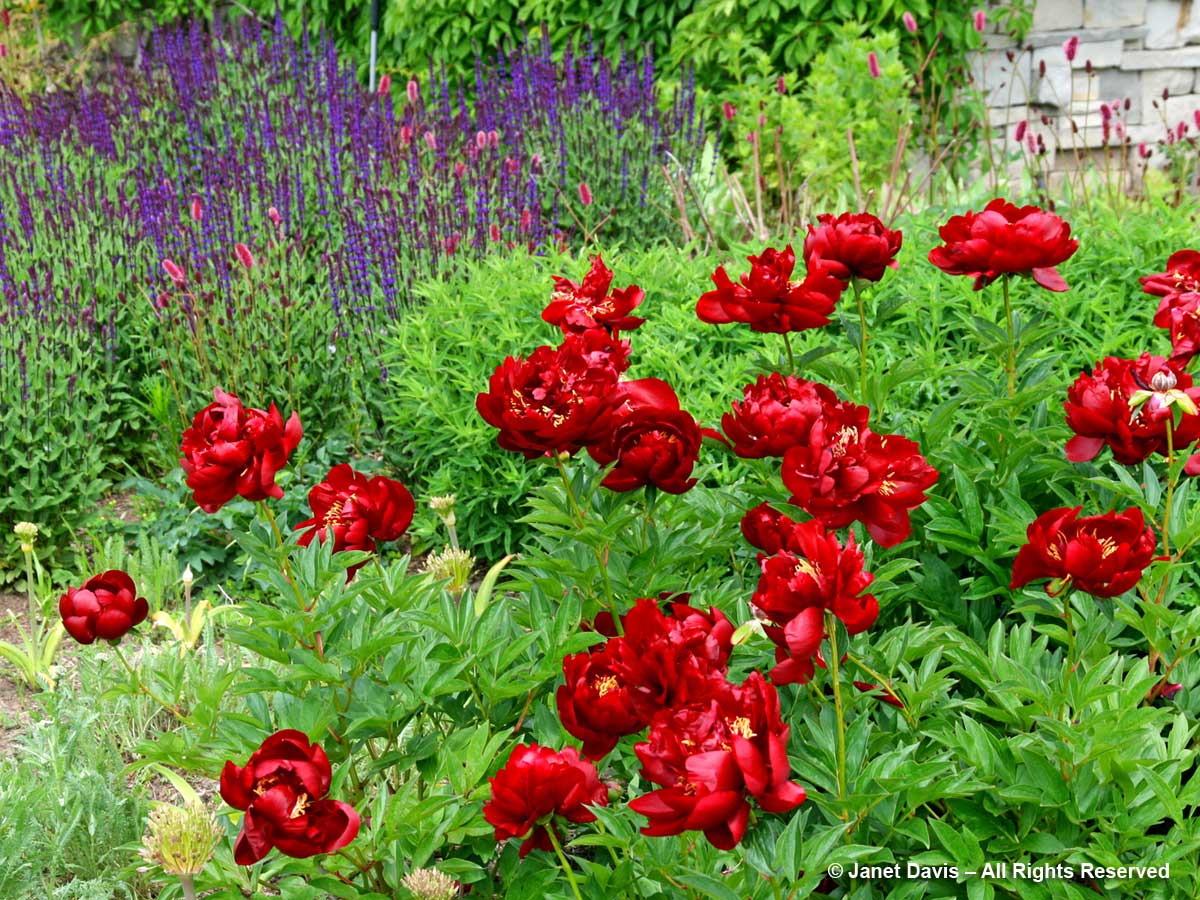
In the perennial border at the TBG, Iris pallida ‘Variegata’ combines nicely with Salvia nemorosa ‘Mainacht’.
At the Royal Botanical Garden (RBG) in Hamilton, near Toronto, Oriental poppies and chartreuse lady’s mantle pair up with Salvia nemorosa ‘Blue Hill’ (‘Blauhugel’)…..
…. which is also a lure for bees of all kinds.
The RBG does an interesting pairing of common rush (Juncus effusus) with ‘Caradonna’ in their wildlife garden.
At Montreal Botanical Garden, this mass planting of Salvia nemorosa ‘New Dimension Rose’ with ‘Profusion Cherry’ zinnia caught my eye.
Perhaps my favourite design using woodland sage was at Chanticleer Garden in Wayne, Pennsylvania. (Read my 2-part blog on this spectacular garden.) In their Gravel Garden, ‘Caradonna’ was combined with annual, white Orlaya grandiflora and red corn poppies (Papaver rhoeas).
The dark wands are repeated down the Rock Ledge garden at Chanticleer with other June flowers…..
…. like hot-pink sweet William catchfly (Silene armeria)…..
….and orange foxtail lilies (Eremurus) along with blue globe onion (Allium caeruleum).
Near the ponds at the bottom of the Rock Ledge, ‘Caradonna’ was used like a crescent-shaped brush stroke through rushes and Artemisia, with big ‘Lucille Ball’ alliums bobbing behind.
And finally, in the Tennis Court Garden at Chanticleer, ‘Caradonna’ was used to provide dark accents alongside the chartreuse leaves of ‘Hearts of Gold’ redbud (Cercis canadensis), alliums and pink-flowered spireas.
Don’t you think it’s time you had meadow sage in your own garden?

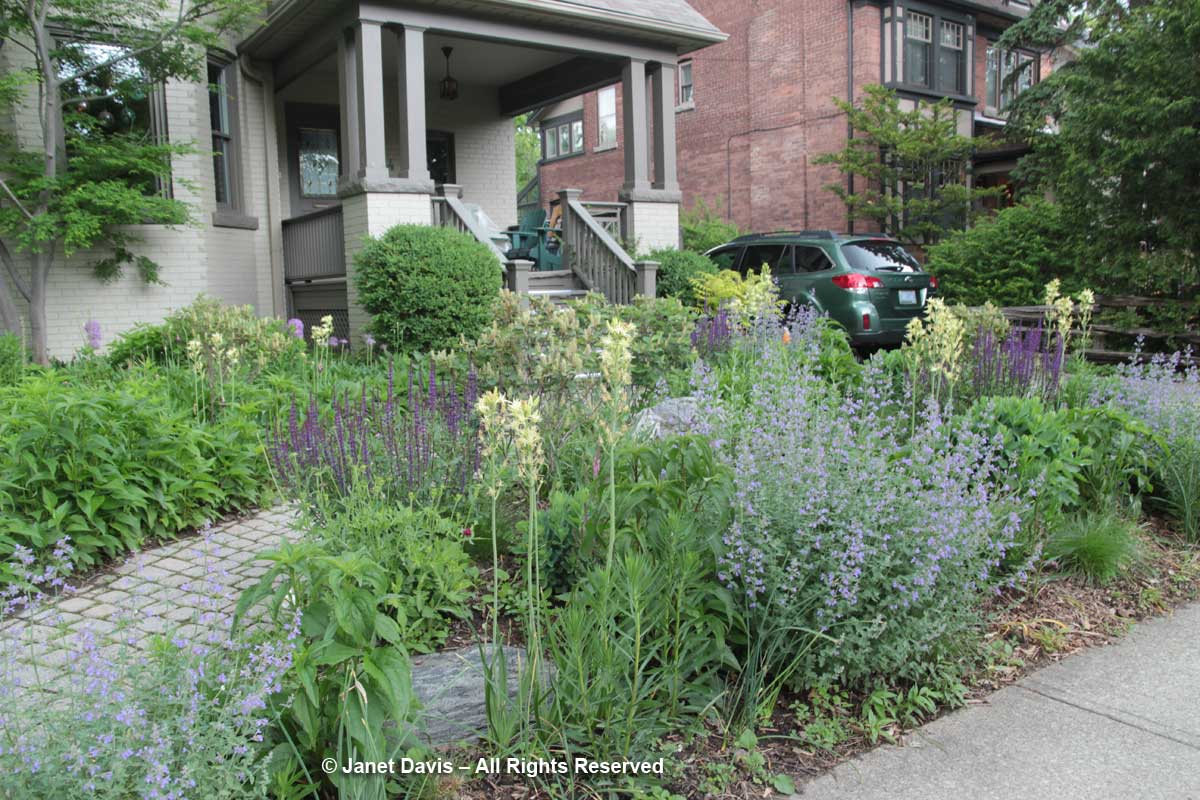
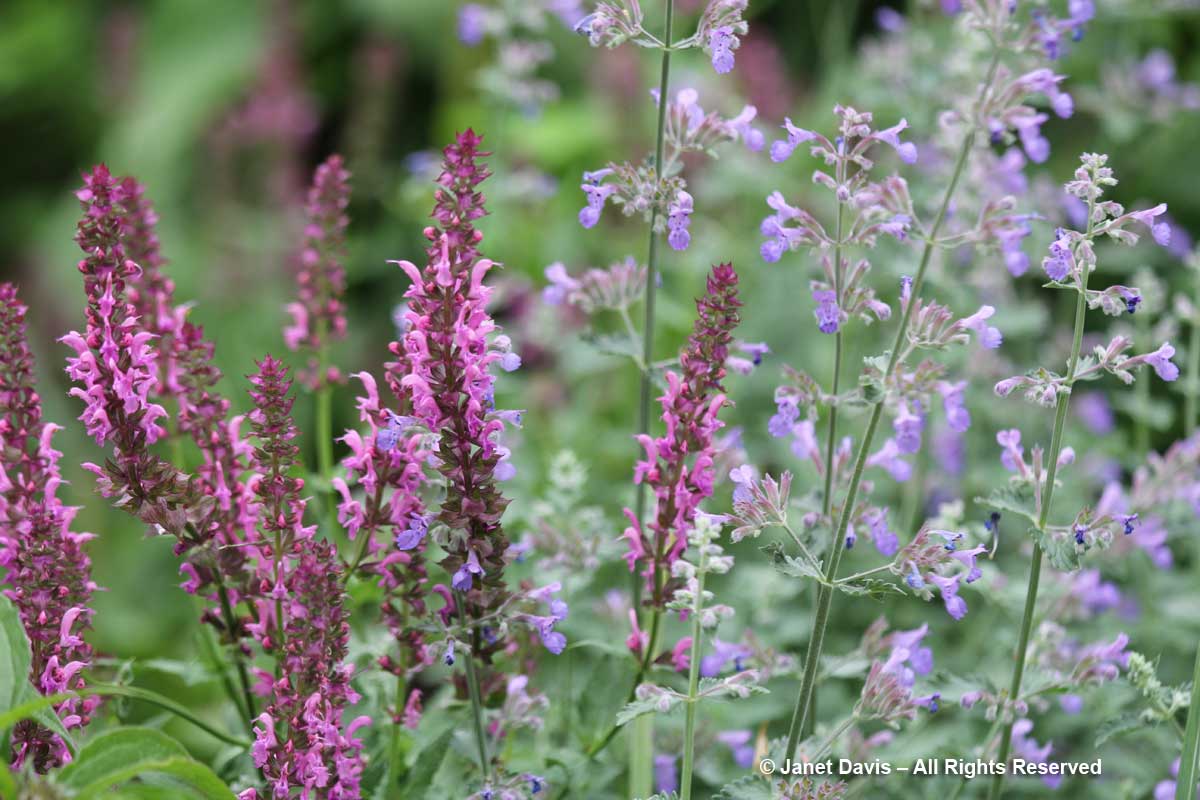
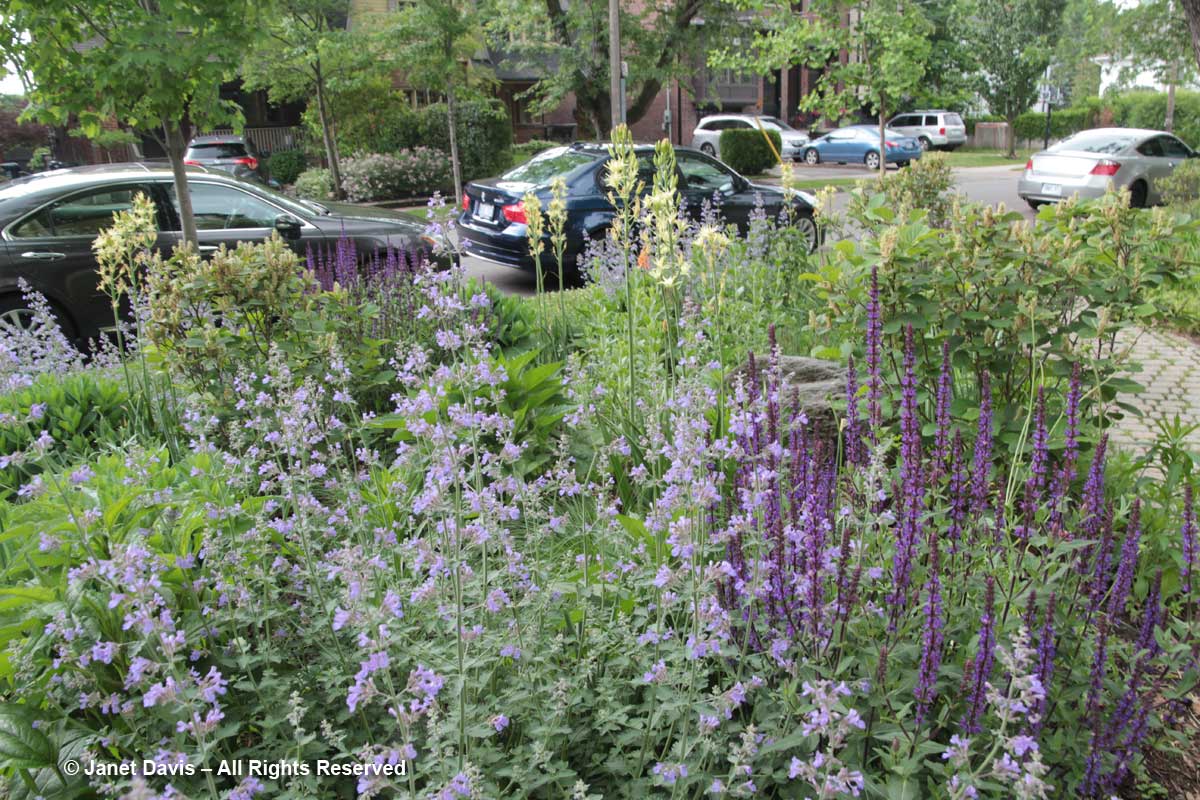
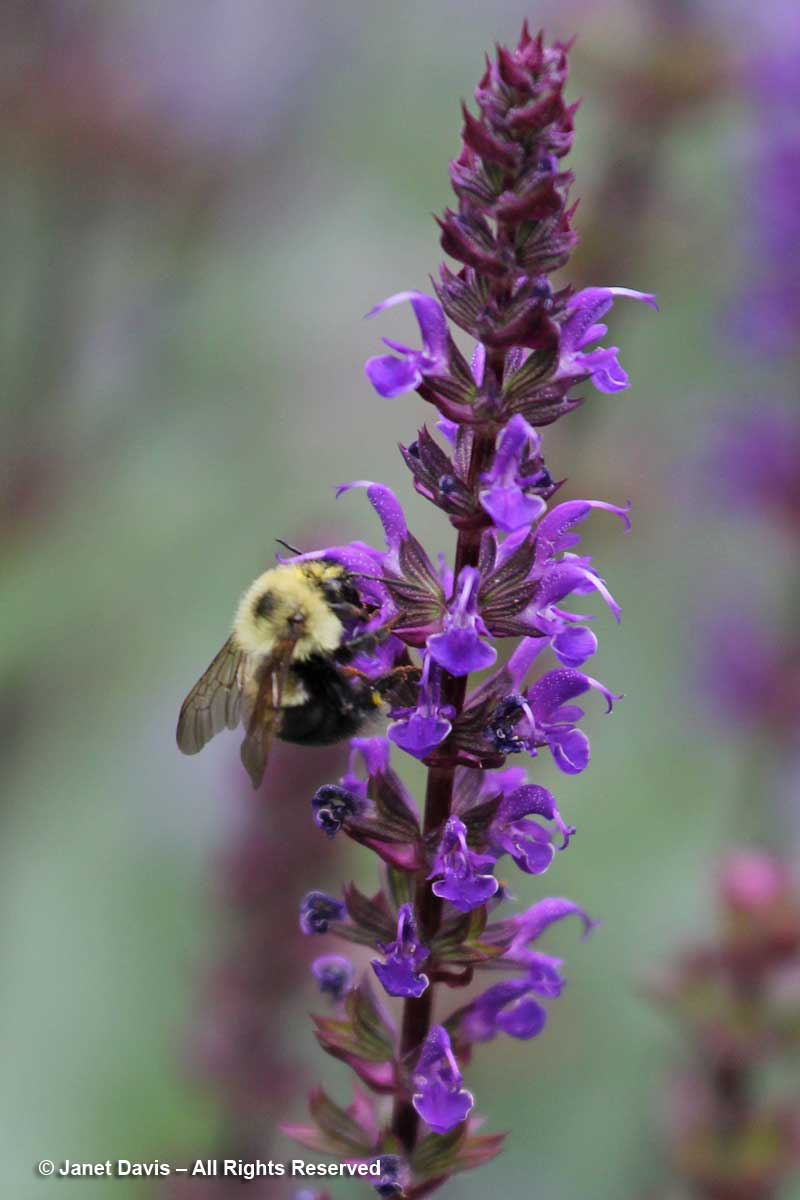
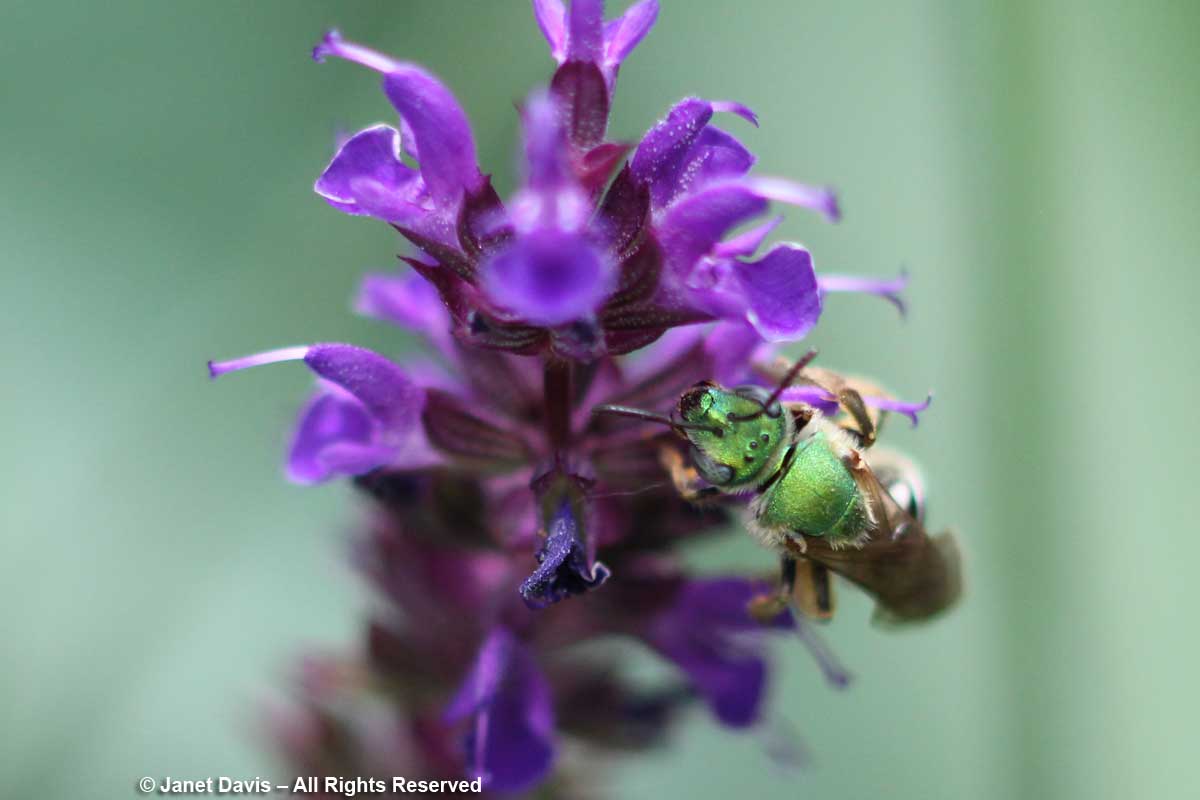
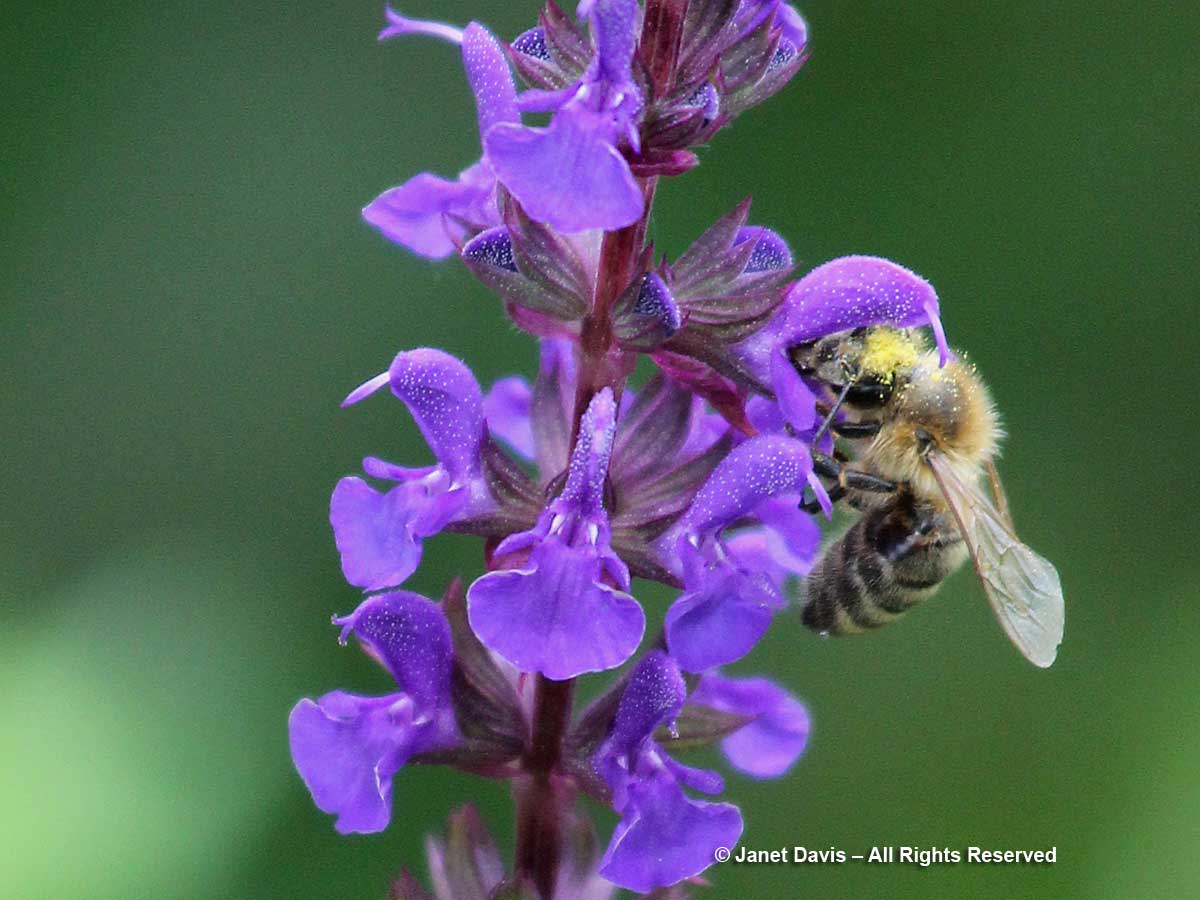
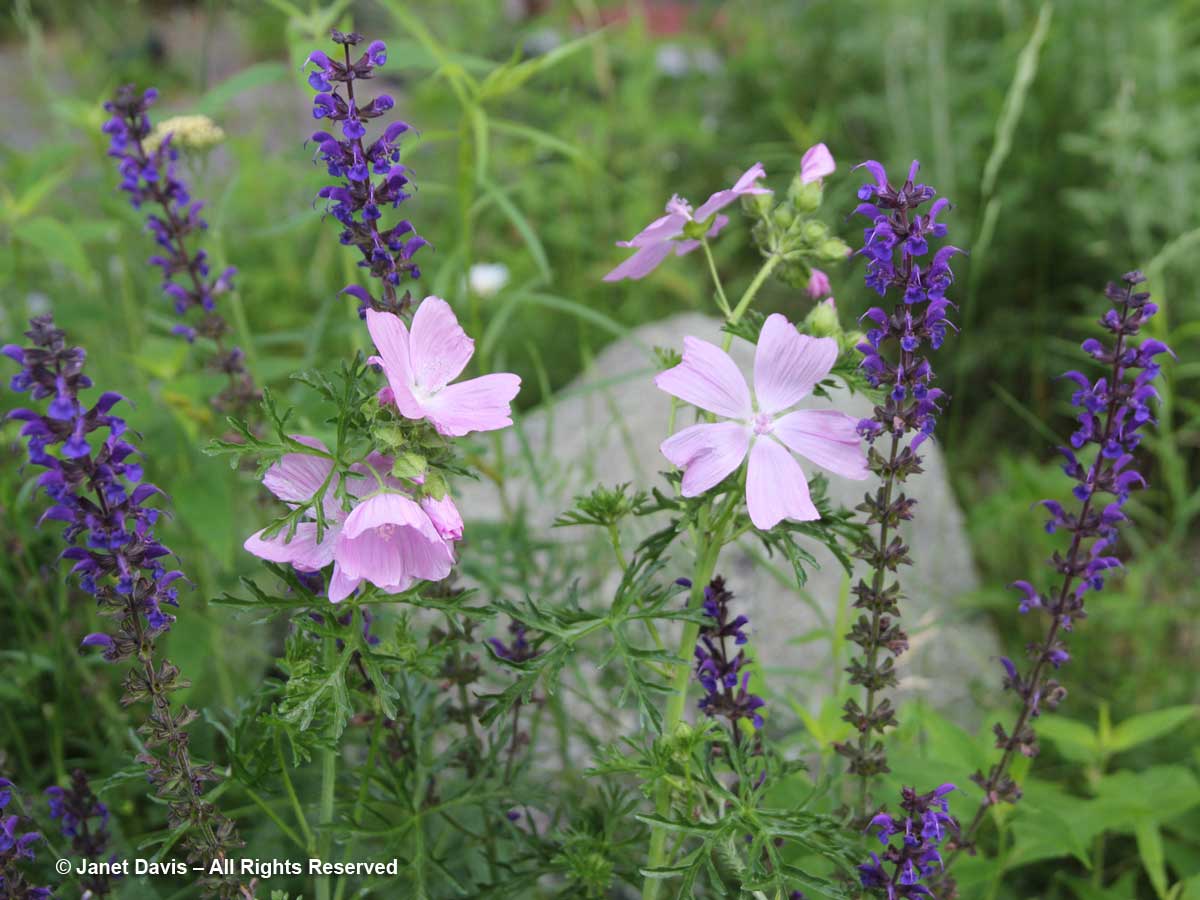
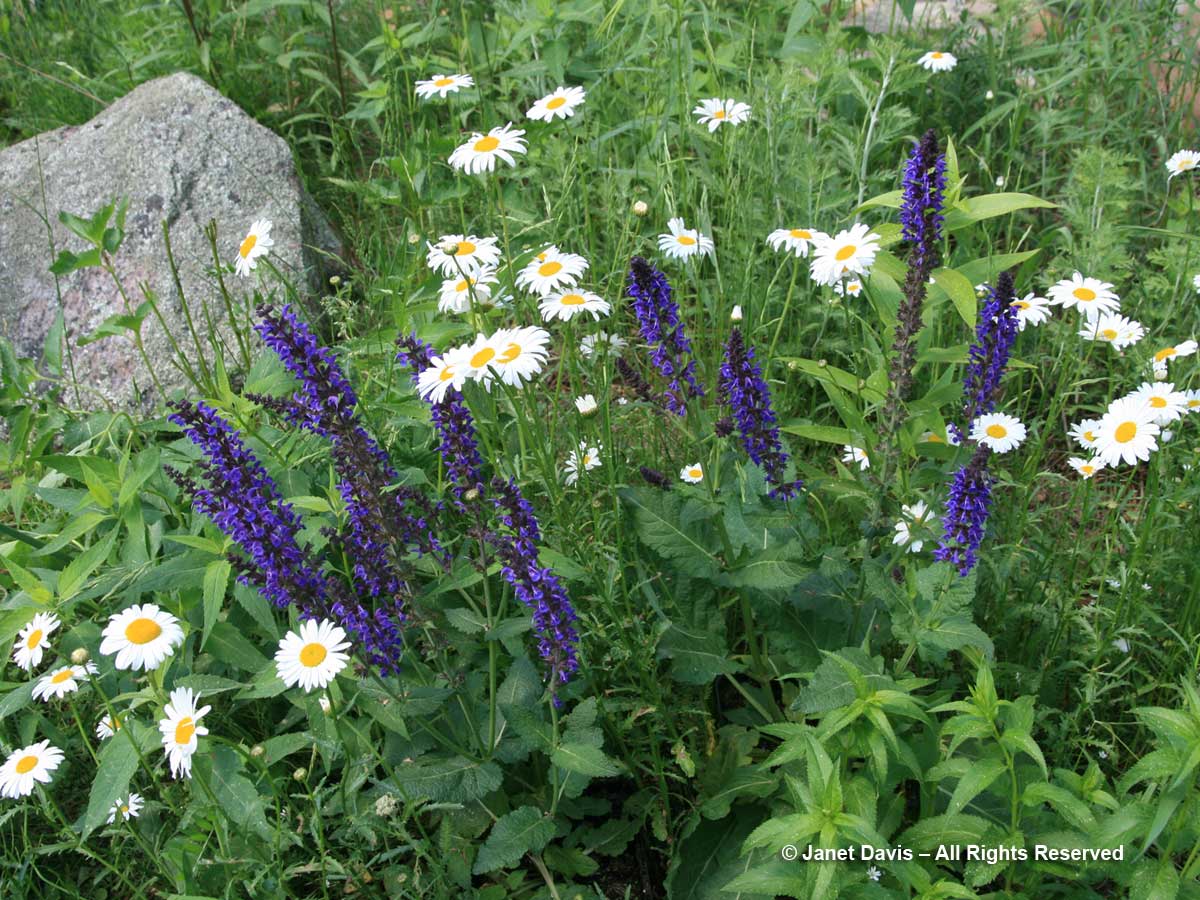
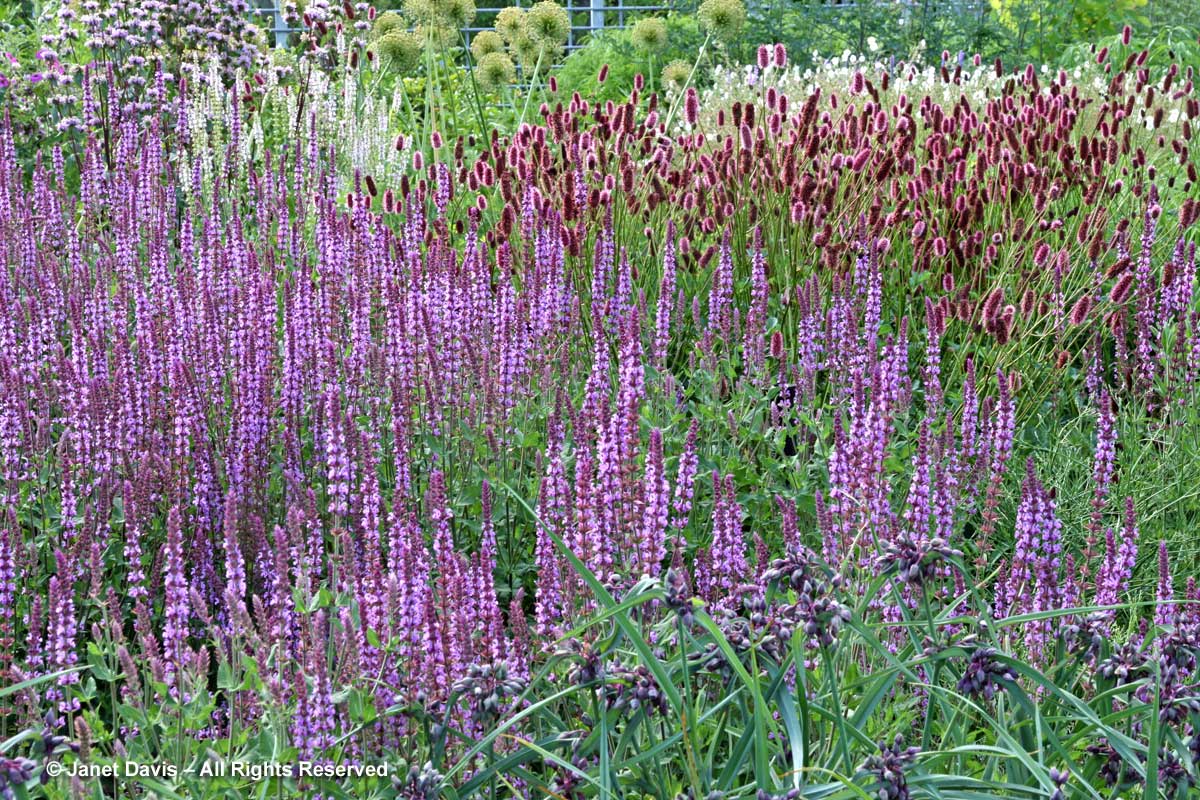
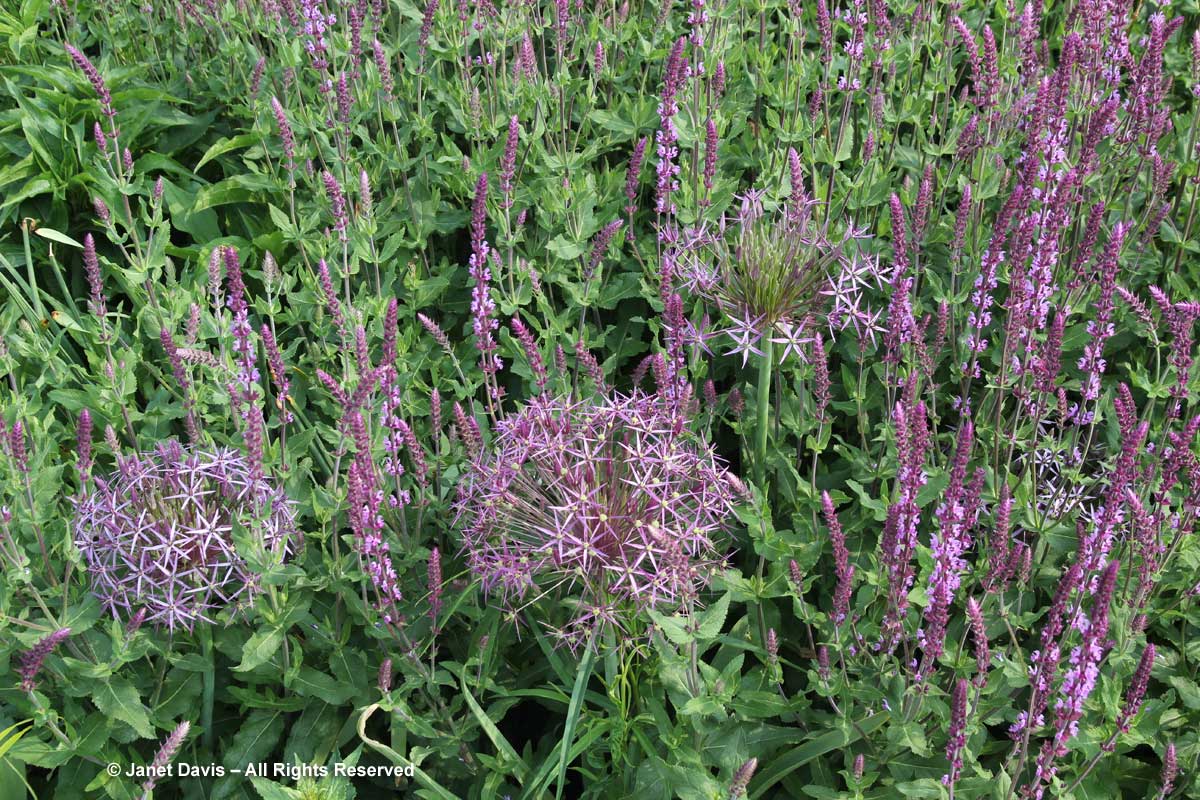
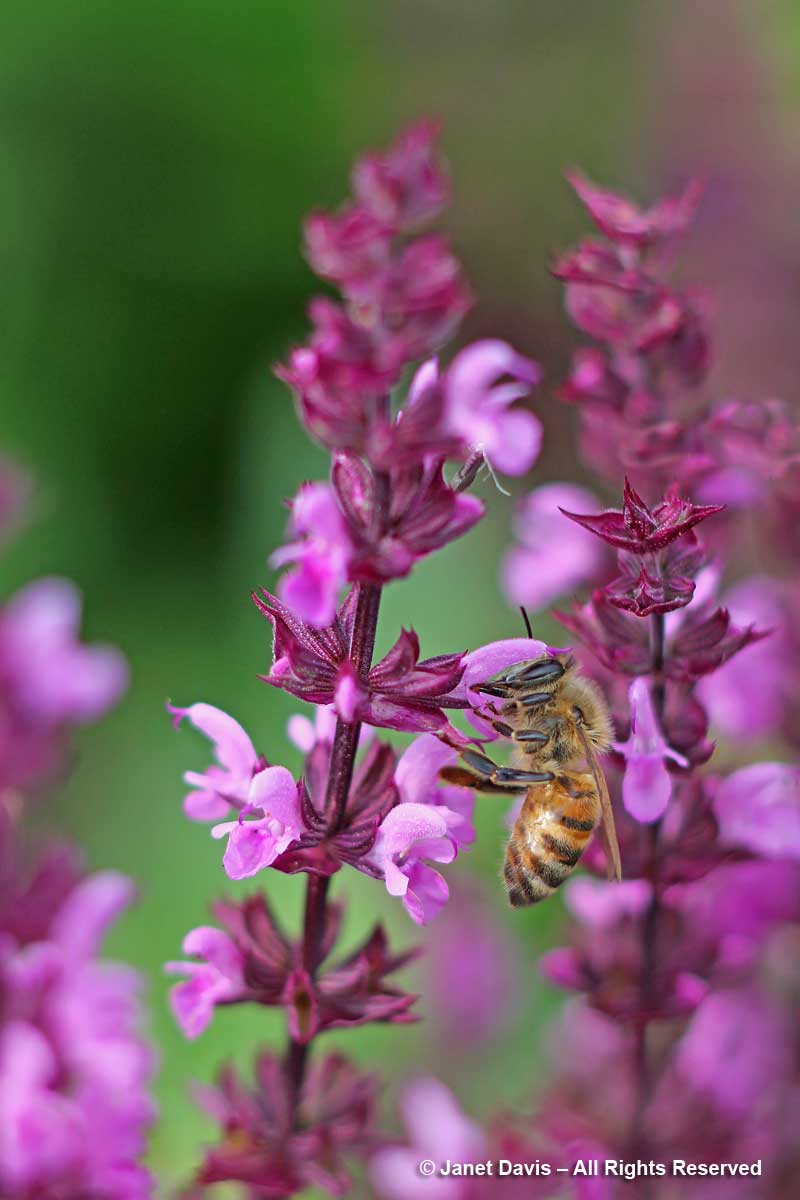
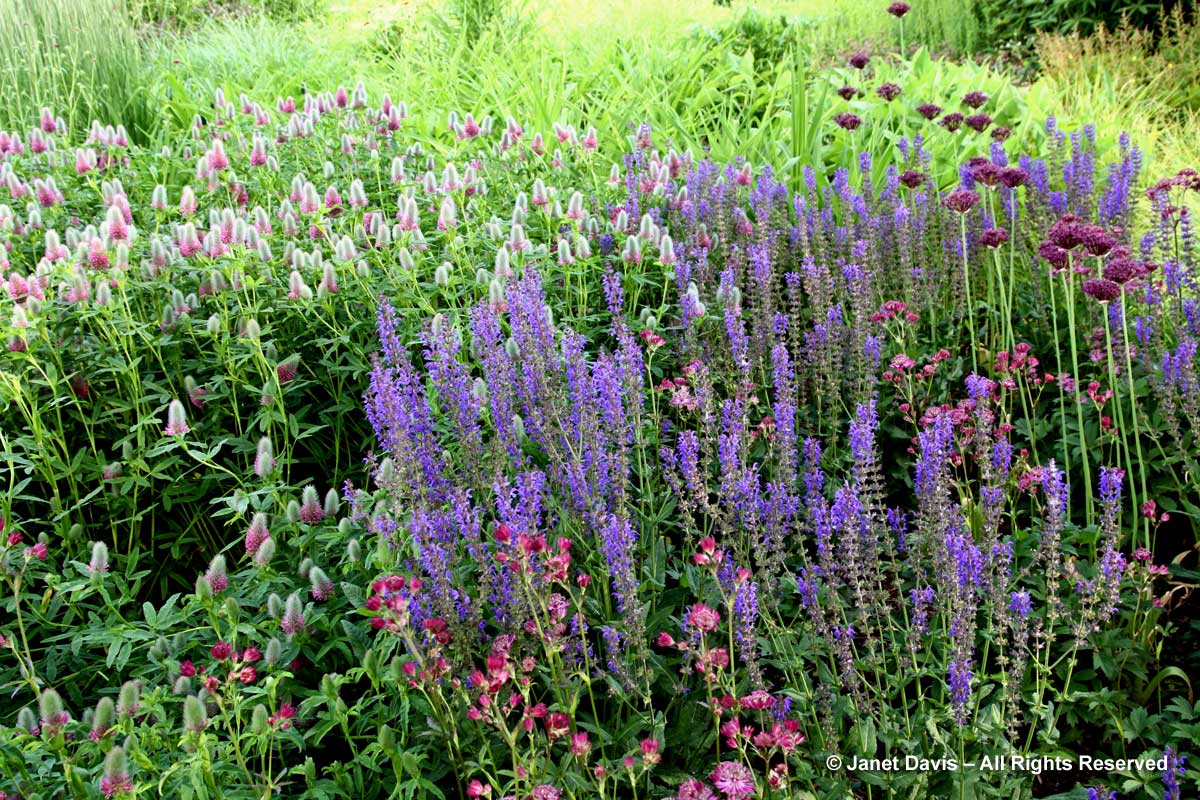
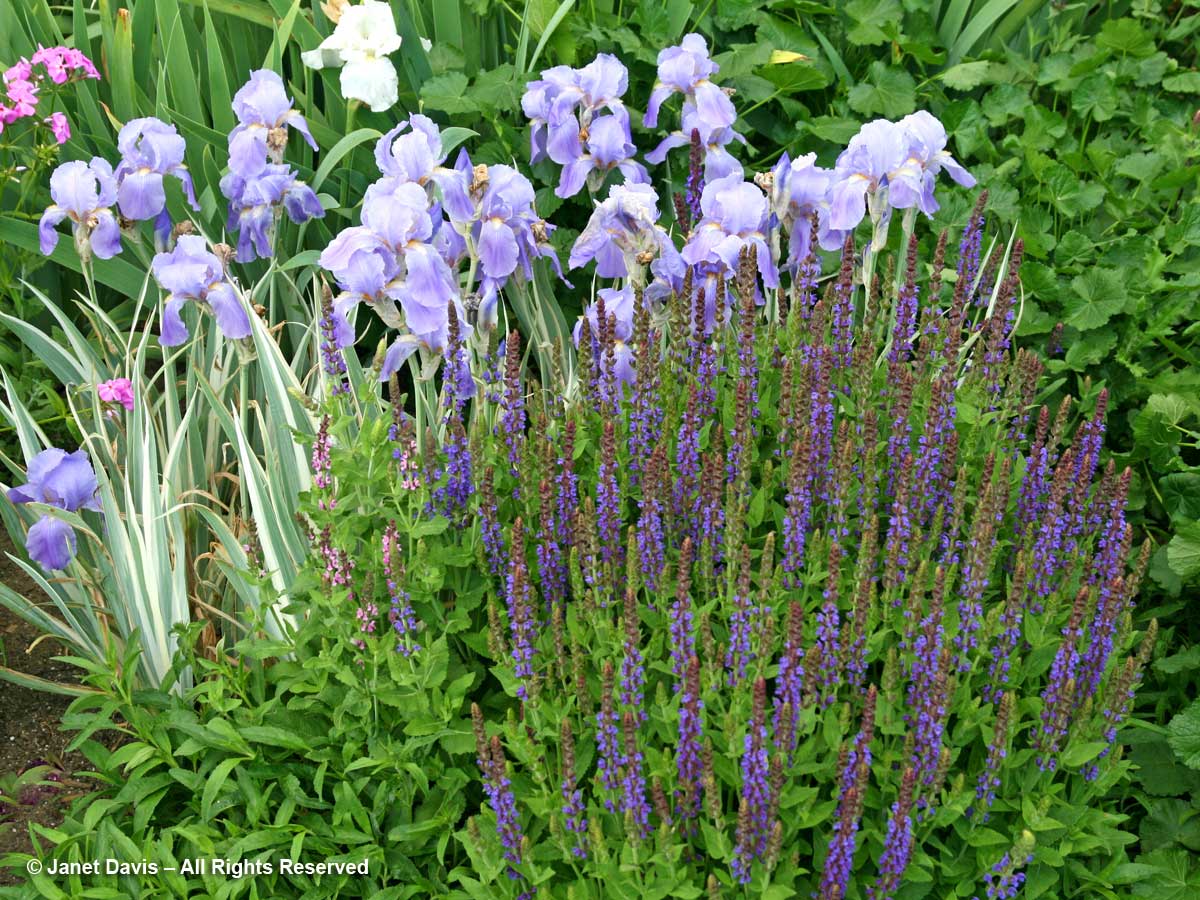
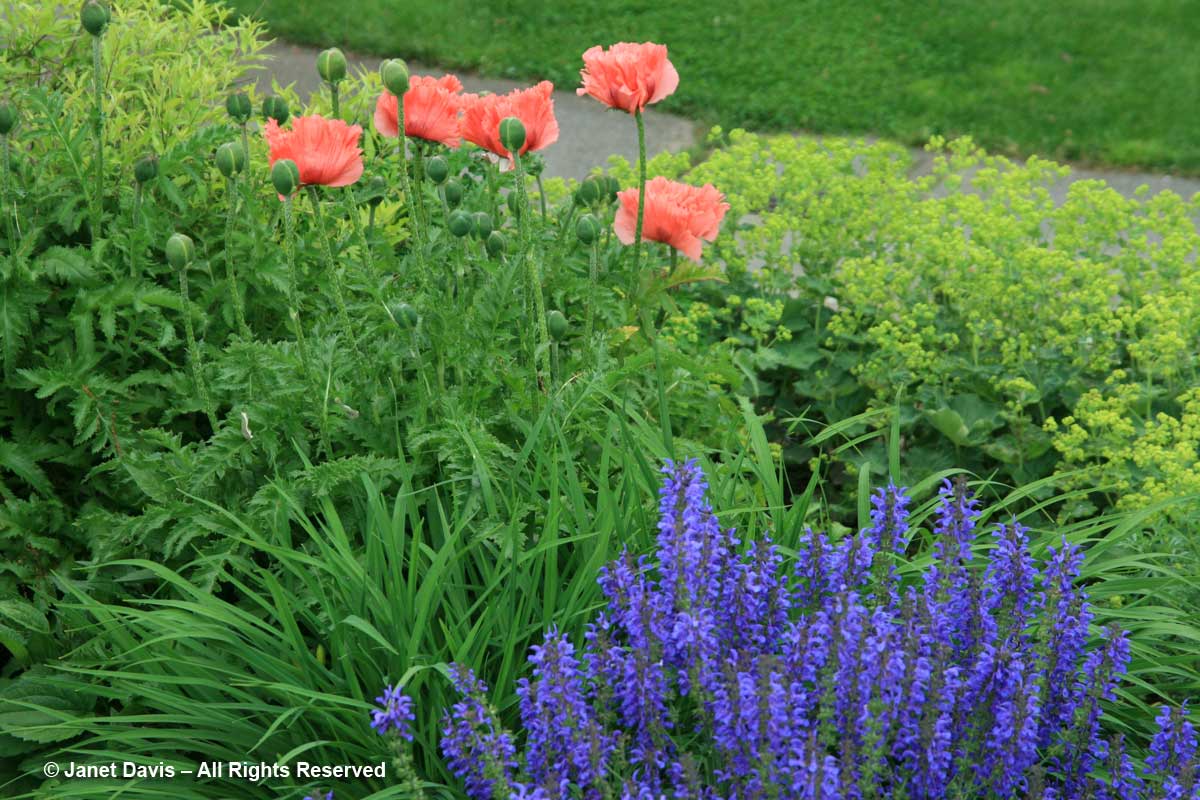
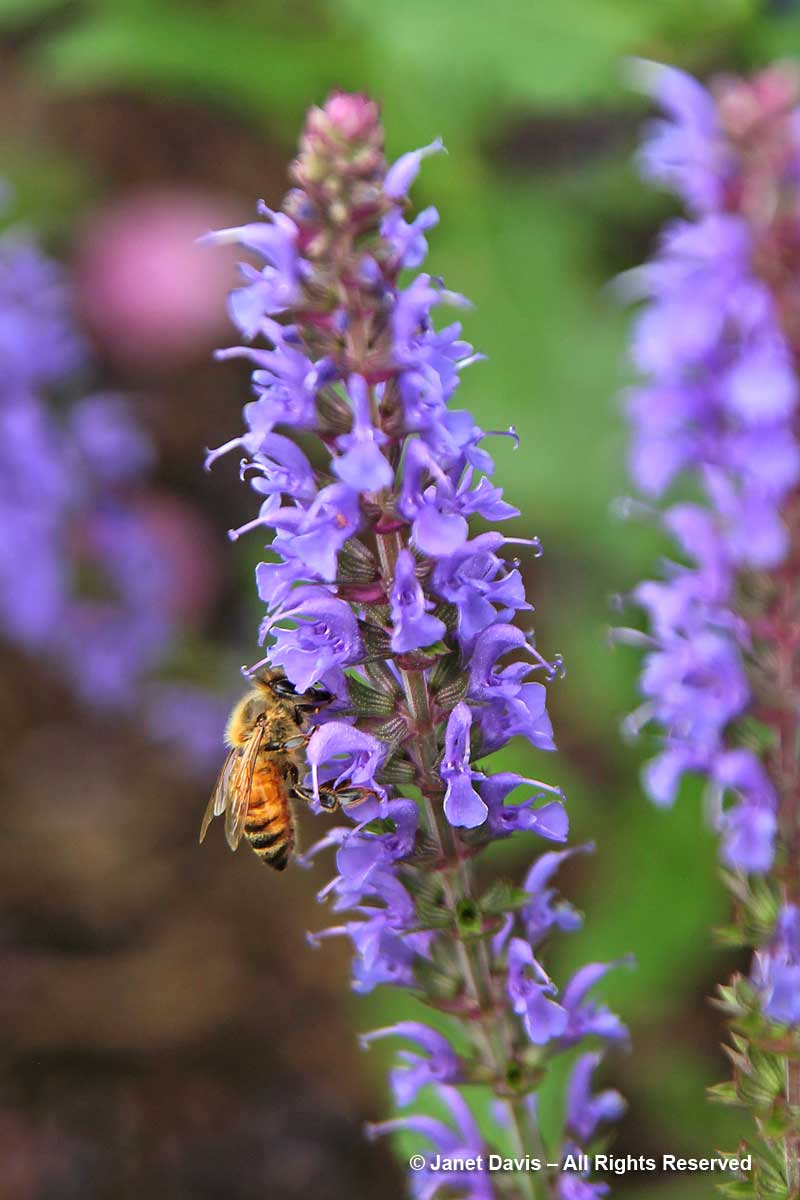
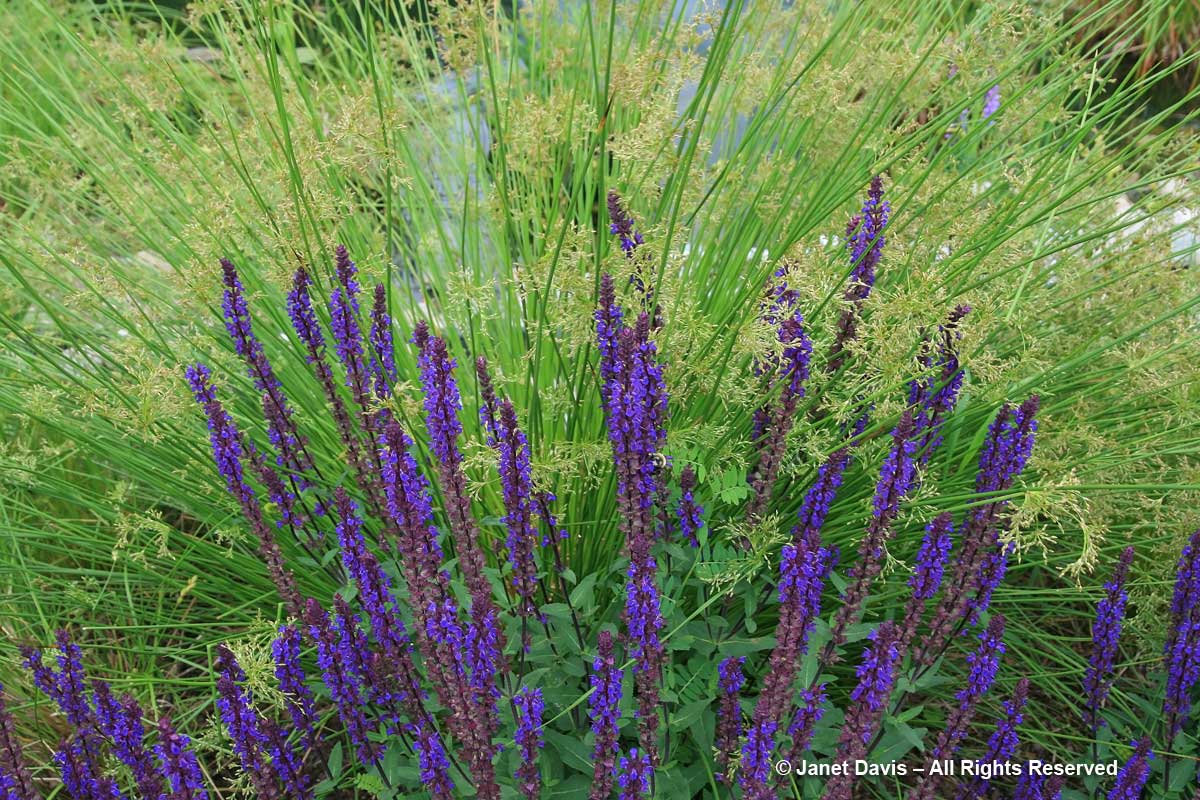
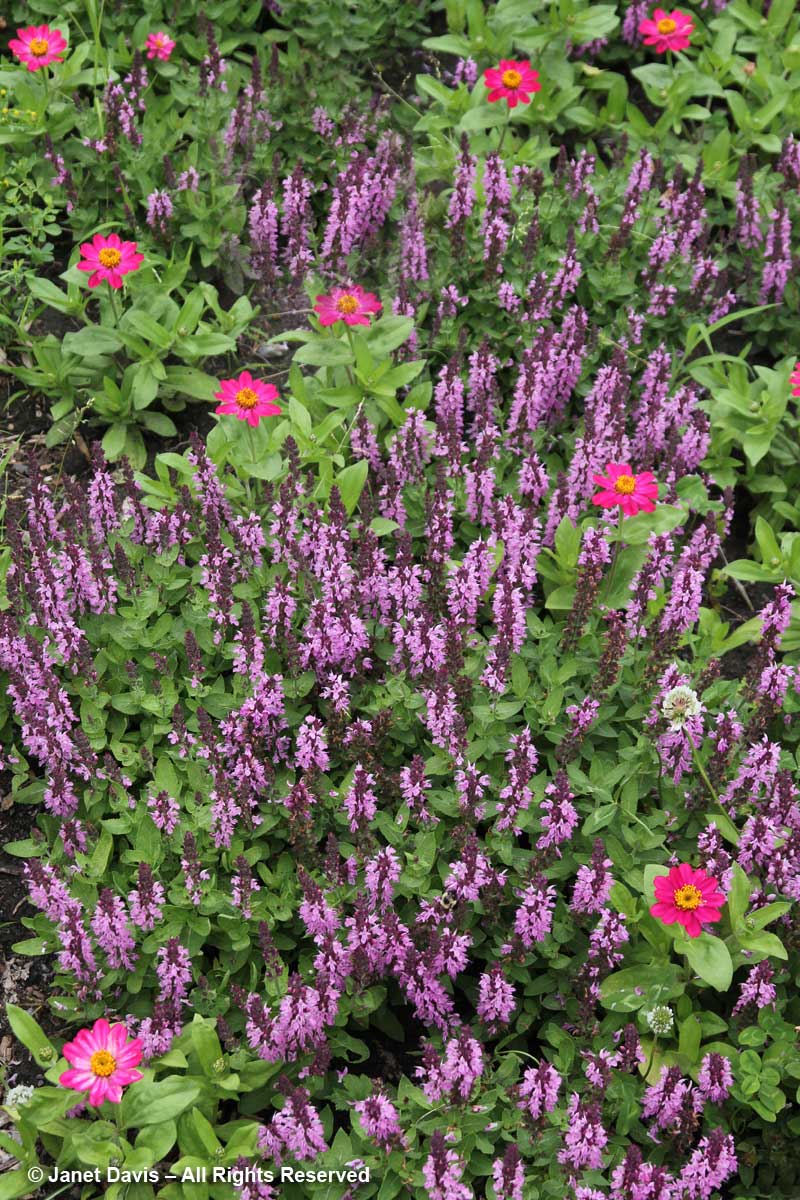
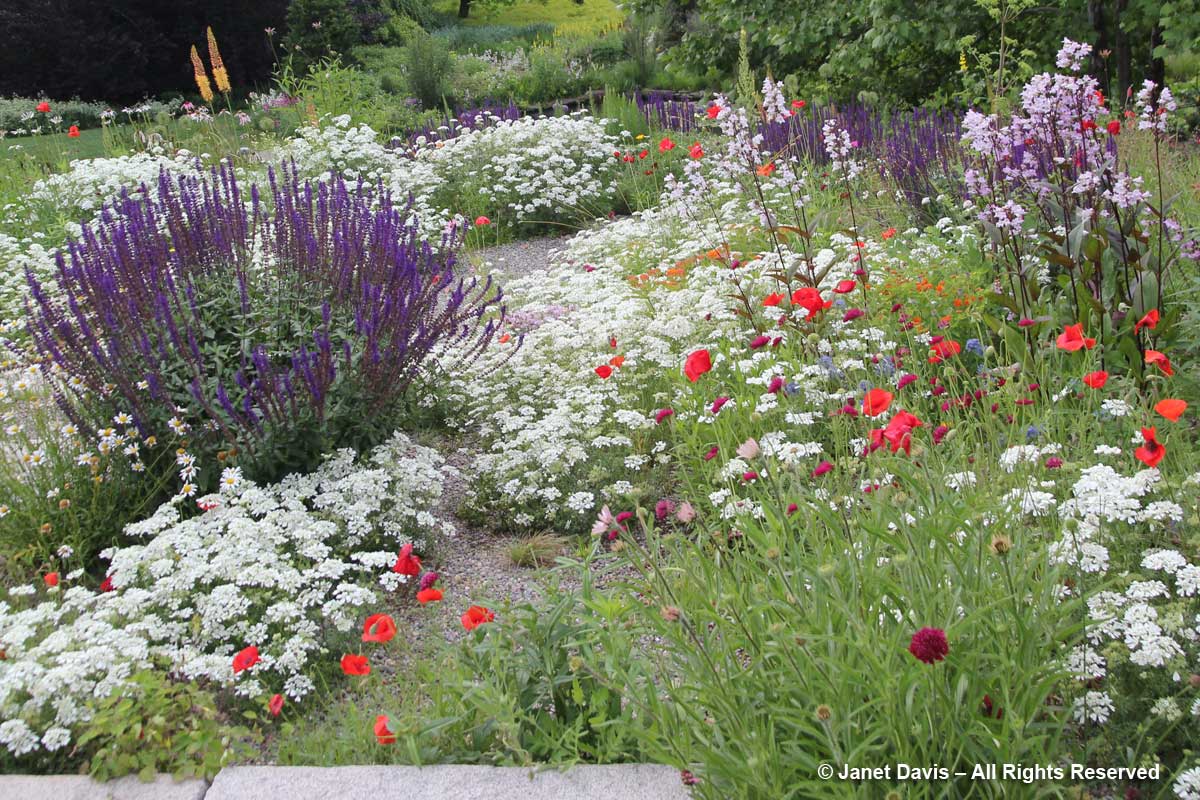
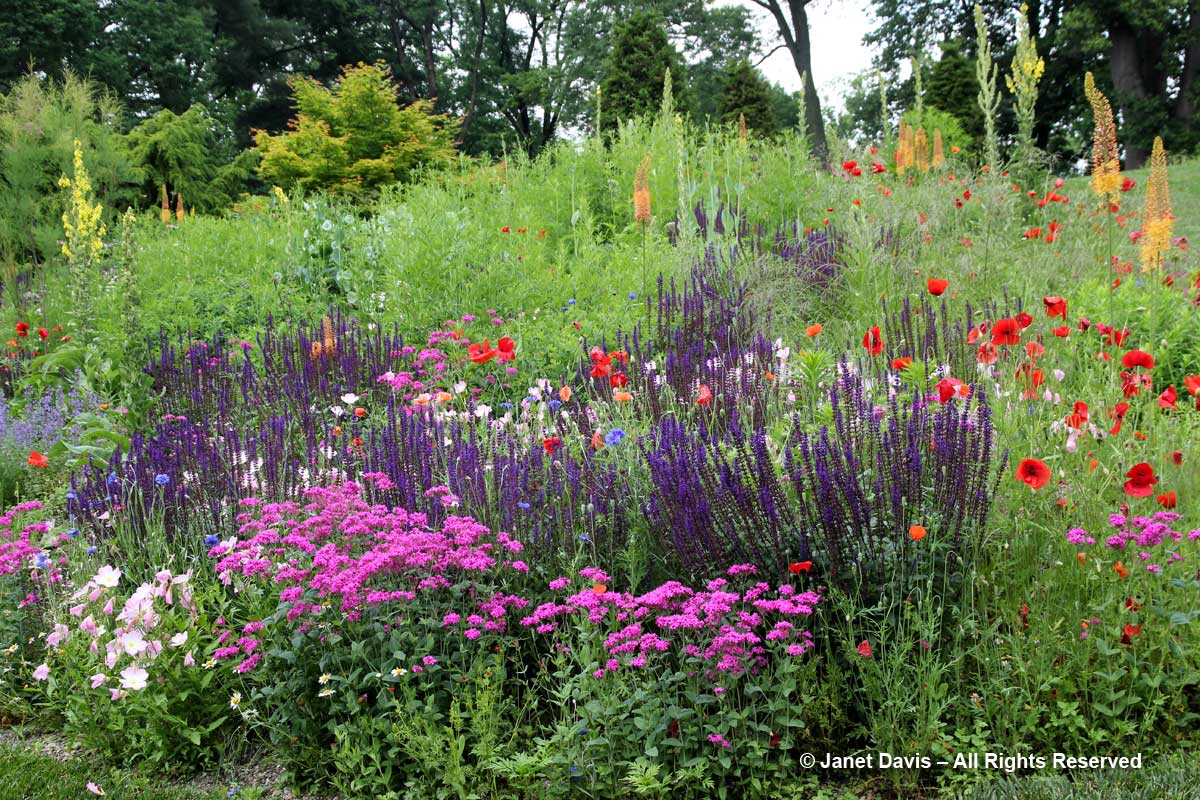
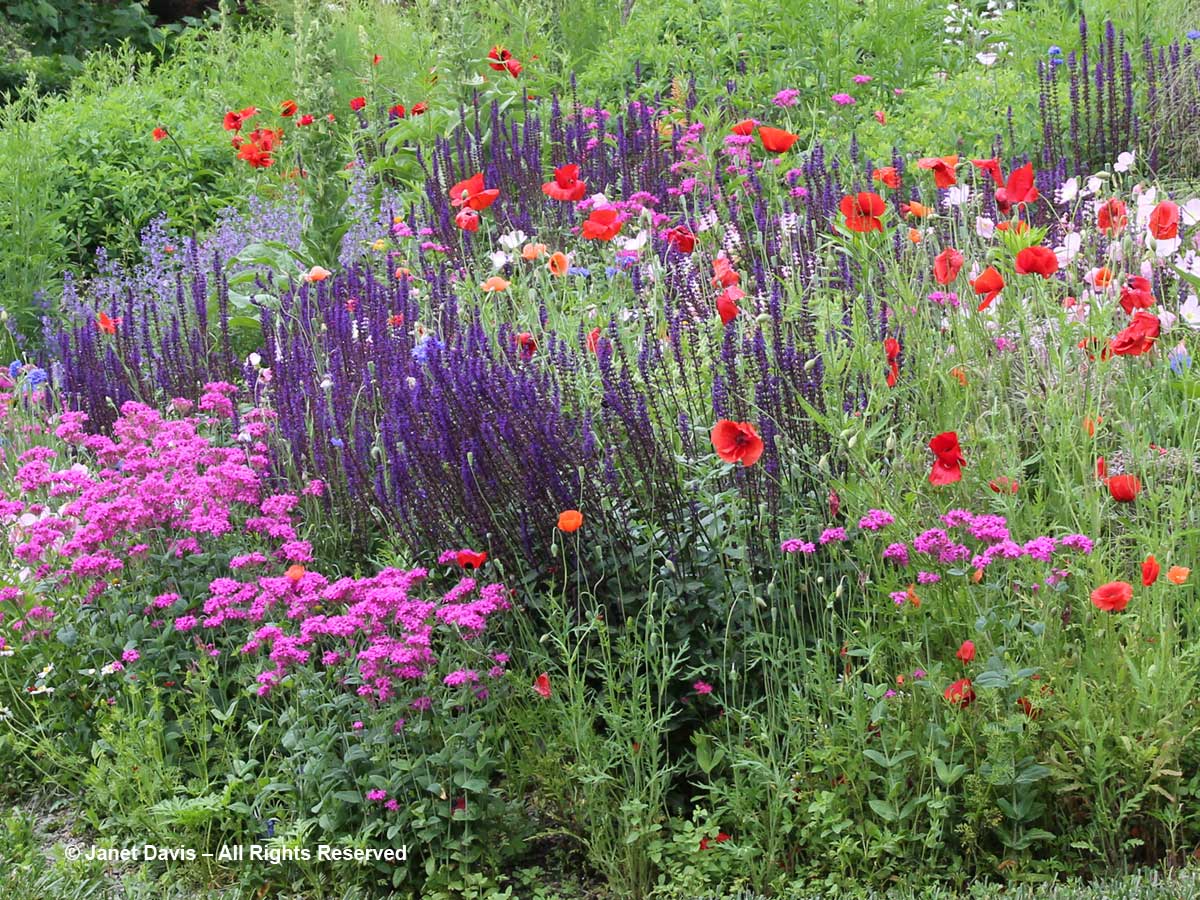
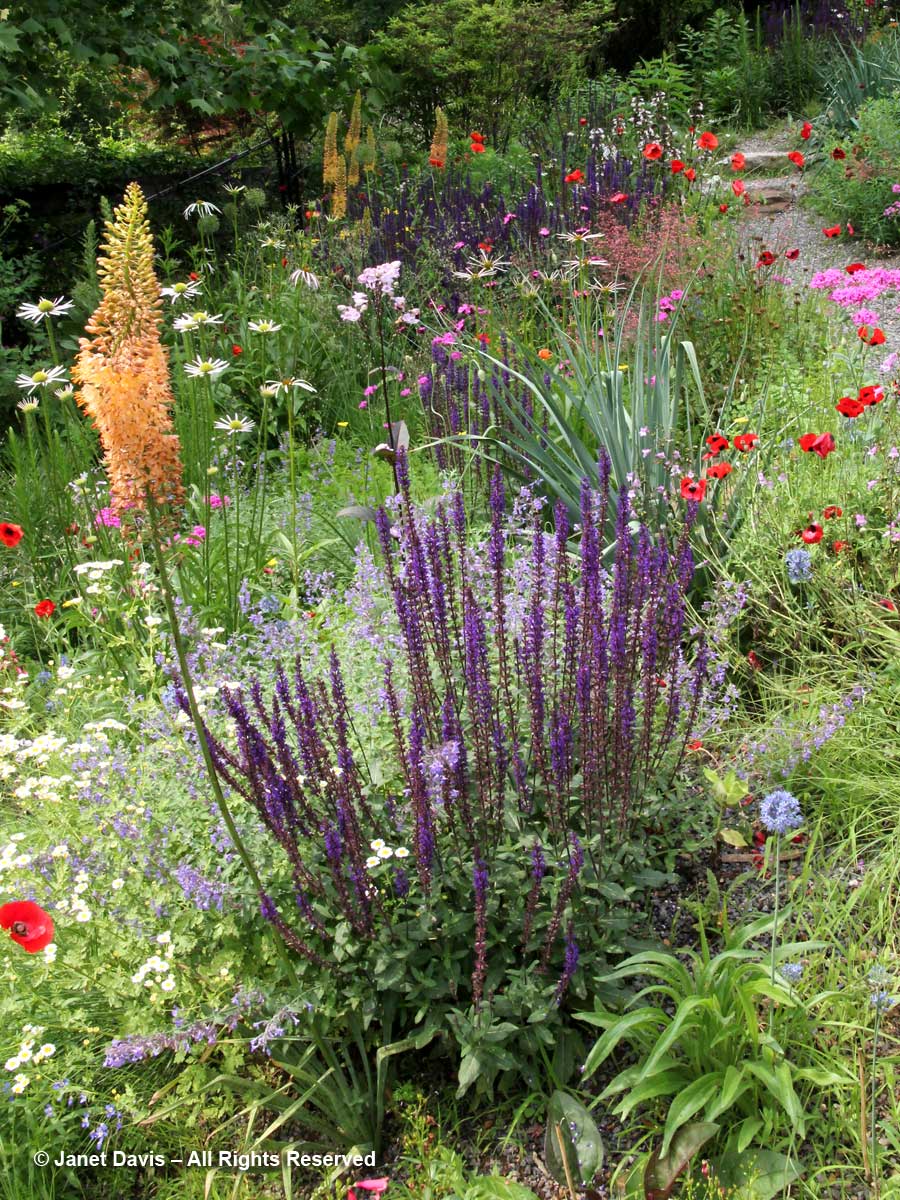
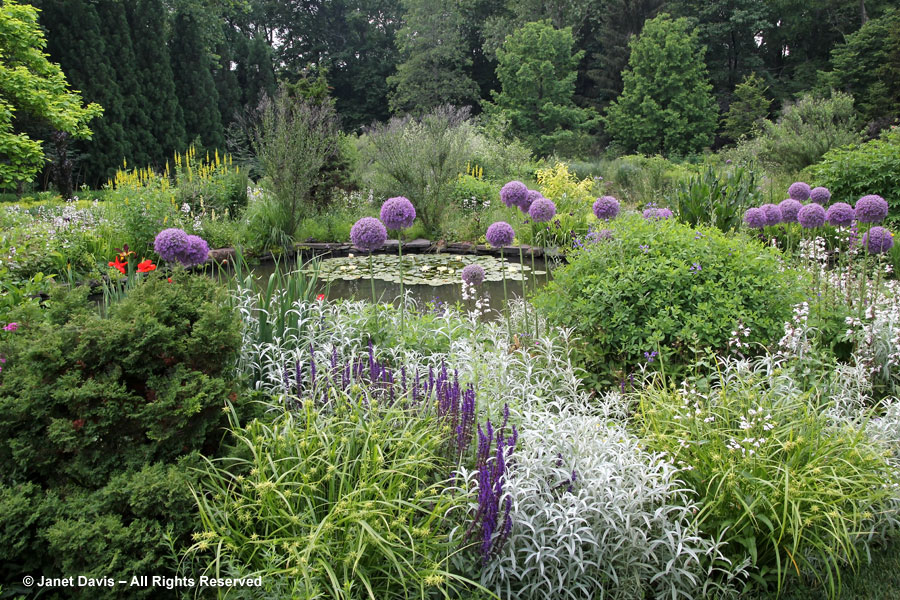
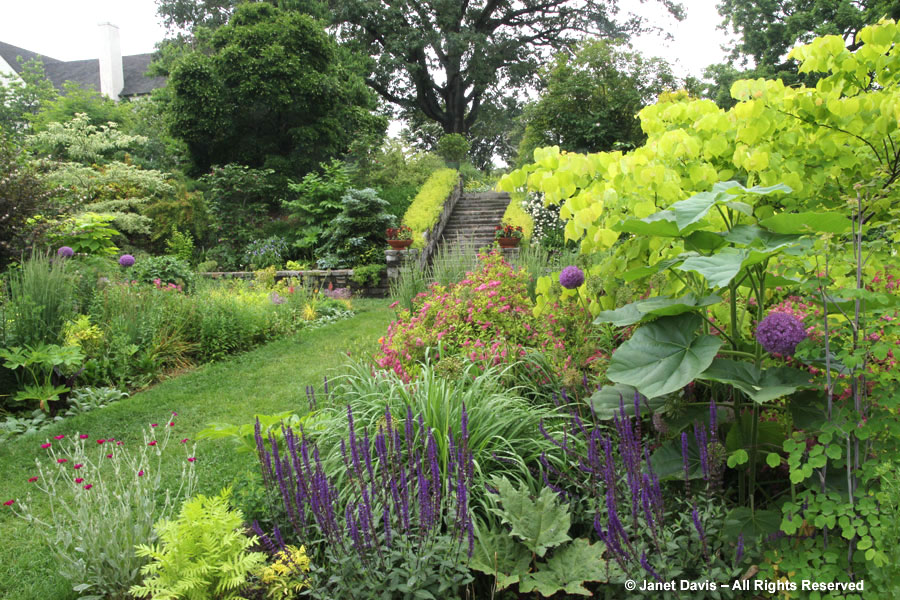
Janet–Yes, I do!! Fantastic combinations. I am looking for this exact kind of inspiration just now, so these ideas here–going straight to the forefront!
So happy you found some good ideas here, Alyse!